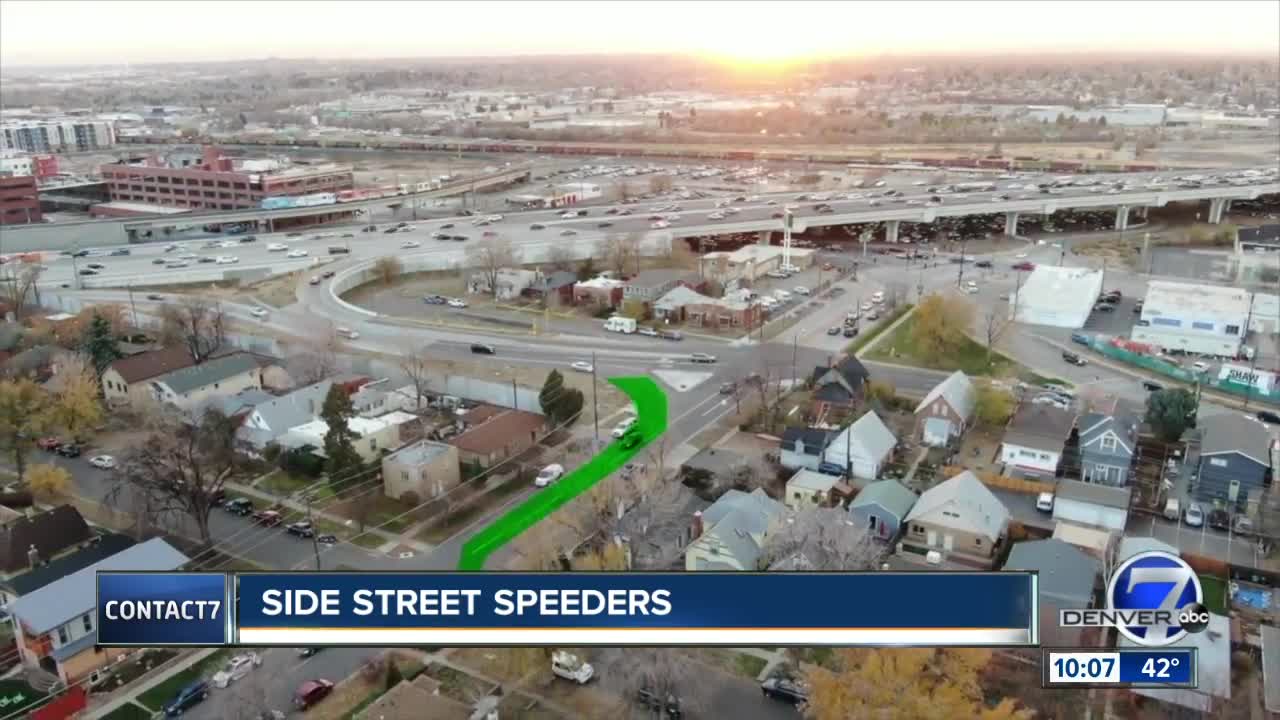DENVER -- Sometimes it's easy to justify cutting corners, but a faster commute for certain commuters has turned a neighborhood's side streets into shortcuts and forced families to square off with city engineers.
"You can't sit out here for a long period of time without watching 100 cars go by," Ken Gregory said. He lives on Sherman Street between Ohio and Exposition Avenues in Denver.
He sees it daily.
"Monday through Friday," Gregory said.
Northbound drivers exiting Interstate 25 at Lincoln Street have increasingly decided to bypass the stop light at Lincoln and Ohio to save time.
"It's a continuous drive off the highway, onto Ohio, make a left on Sherman, and just going as fast as you can to get home," Gregory said of the drivers, some of whom he said he's confronted.
Contact7 Investigates found the algorithm for Google Maps will actually encourage drivers to use Gregory's street, where cars are parked on both sides and children ride tricycles, because it's "1 min. faster."
"It's overwhelming at (sic) some times," he said.
Gregory and several of his neighbors even showed Contact7 Investigates emails demonstrating they've contacted city leaders and engineers numerous times over the last three years to consider installing radar speed signs, speed bumps or "no left turn" signs. They also suggested police increase enforcement.
"Nothing has been done yet," he said.
"This is a frickin' highway," neighbor Lori Netzly said.
Contact7 spoke with Denver Public Works, which confirms traffic engineers have been aware of the concerns for years.
"We know it's completely frustrating for the folks who live there," Heather Burke of Denver Public Works said.
But she said the department isn't really able to make any more changes.
"It's all a huge balancing act," Burke explained of the need to keep the large volume of traffic moving along nearby Lincoln and Broadway — especially traffic exiting I-25.
In 2016, she said engineers retimed traffic signals in the area in an effort to assist.
In 2017, the city conducted a study of traffic volume on Gregory's specific block and discovered, for instance, 76 northbound vehicles used the street between 4 p.m. and 5 p.m.
In an effort to confirm Gregory's concerns that traffic has increased in volume, Contact7 Investigates counted northbound vehicles that exited I-25 and used Gregory's block as a bypass. Between 4 p.m. and 5 p.m. on Tuesday this week, the team counted 124 vehicles — a roughly 63 percent increase in traffic.
Gregory said the numbers don't surprise him and said traffic on his block is at its worst between 3:30 p.m. and 6 p.m.
Still, Burke said engineers will typically only add traffic-calming devices to streets where total vehicle traffic exceeds 3,000 in a day and when crash risks appear. The latest city estimates show roughly 1,000 total vehicles driving Gregory's block in a day.
"We've almost given up," he said. "We're going to ... probably have to wait for something drastic happens (sic), until somebody gets hit by a car, a child gets hit by a car."


